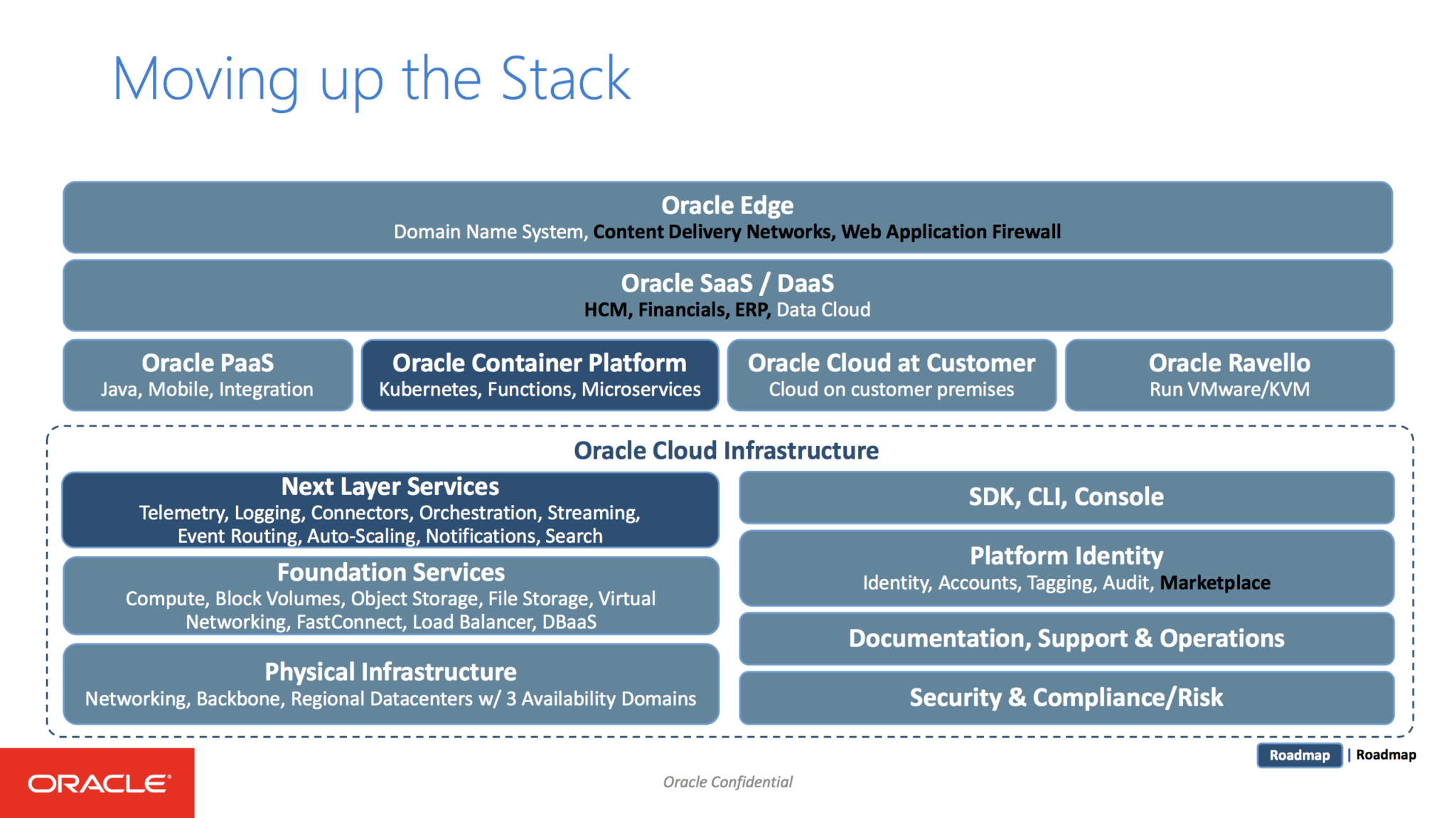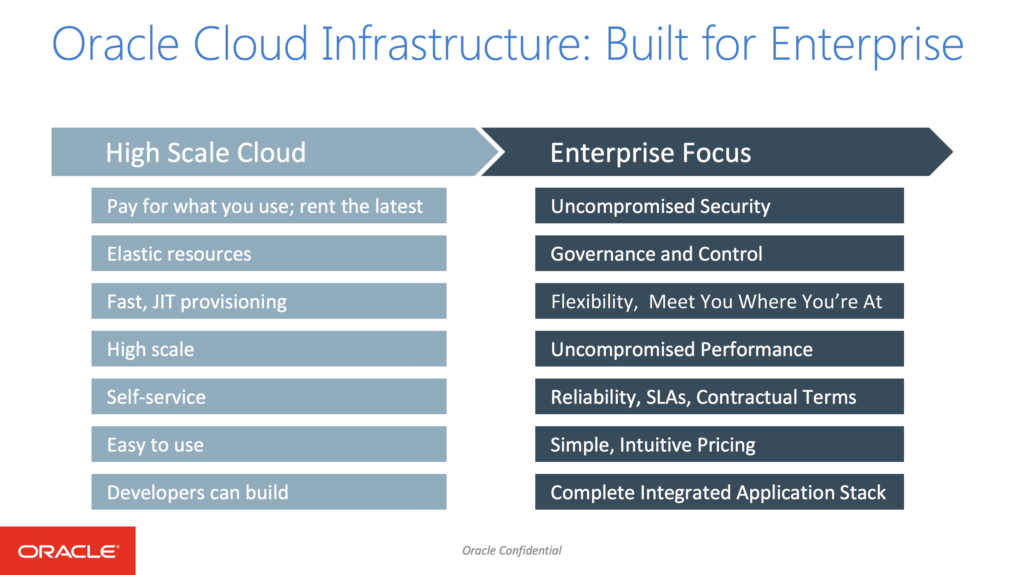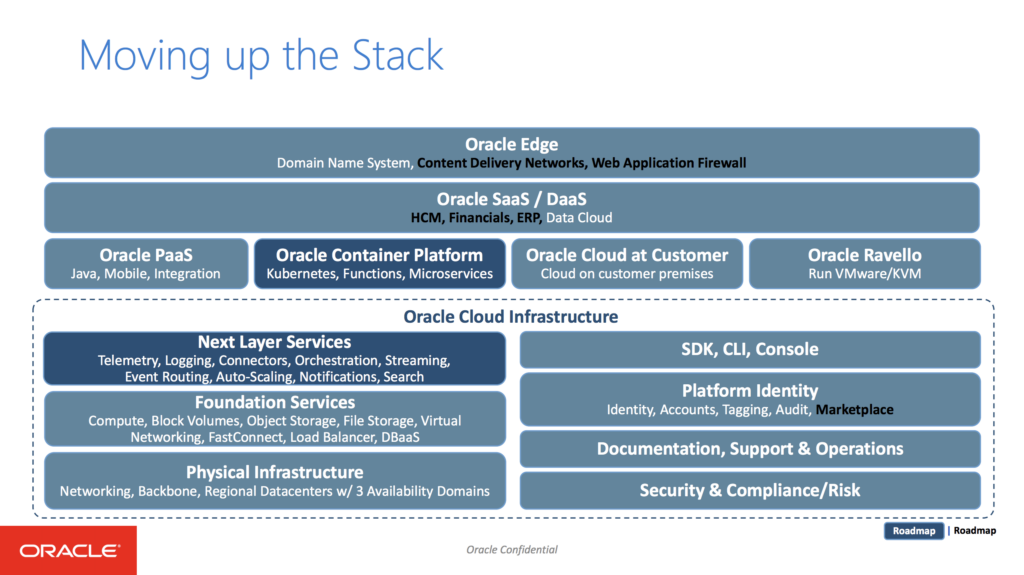Oracle is driving hard towards customer-focused cloud. The amount of listening being done by the product teams is showing in the product roadmap that we saw at the (Ravello Blogger Day 2) #RBD2 event in Redwood City, CA this week. This event features a broad array of industry folks who are in vendors, ISVs, VARs and other roles.
Oracle was presenting the Oracle Cloud Infrastructure and Oracle Ravello platforms over the course of the 8 hour event. Q&A becomes the dominant and most exciting part of the day as the content is unfolded for us. Some may quip about the “leading from behind” approach, but there can be little doubt that the boldness of Oracle is proving to be more than all talk as the customer examples and successful execution of the OCI story continue to roll in.
Cloud Truly Ready for the Enterprise
SLA is king in the Oracle cloud. Moving mission critical apps to the cloud rather than rearchitecting to map to the cloud patterns is a big driver for Oracle Cloud adoption. While the cloud pundits may shun this approach, the reality is that customers will adopt cloud to get the new features and are comfortably beside the “lift and shift” application stacks. The marketing of this option has resulted in a change from “lift and shift” to the newly dubbed “move and improve”.
Providing versatility and SLA on the OCI service stack is the icing on the typical IaaS cake. Oracle clearly pins their value on the performance side of things, which is top of mind as folks have tested the cloud waters and seen the inconsistencies in performance at many layers of some environments.
I get the feeling that a distinct advantage for Oracle is the fact that their existing customer base will tend towards being enterprise already. Not many Mom and Pop shops are running Oracle RAC. Being able to sell to a strong base will be extremely helpful in early expansion.
Driving SLA and quality of service as the key performance indicators will draw the eye of any good CIO. There is also a surprising humility among the folks that I’ve spoken with here at the event as they acknowledge the need to shake a potential perception problem with leaning into Oracle as a primary provider.
Build, Buy, Integrate
Starting from 12 years behind compared to alternative public cloud providers means being aggressive. The story is playing out on a few fronts. As most of you know, when you can’t build it, you have to buy it. More importantly, you have to integrate it.
Dyn, Ravello, and more are being quickly integrated to widen the portfolio of Oracle Cloud services. Adding Wercker into the portfolio also brought over some development credibility as a nice way to drive the CI/CD adoption on the Oracle Cloud stack.
Filling up the full stack is also particularly important. The evolution and goals are very interesting to watch. The need to present more than core IaaS is apparent. I’m especially excited about the Terraform integrations (you had me at Terraform), and Terraform services (state management, registry and more) that was discussed. I’ll share more on that once I dive further into it.
Further blogs will dive into some of the key areas of Kubernetes and PaaS/CaaS options. I felt those need a bit more of a deep dive.
Did I Mention Performance?
As someone who’s in the business if workload performance through Turbonomic, this resonates deeply with me. The Oracle team is clearly laser focuses on performance and looking to hit those performance targets while being cost-competitive to alternative offerings.
Oracle’s business is full-stack. The goal (clearly stated and fully transparent) is to go directly against the competitors (read: AWS and Azure) with performance and price. Having the customers using their stack already on-premises makes the transition to Oracle Cloud rather attractive. This is the same approach that Azure is taking. Credits and discounts will come into play to make the first steps enticing, but what will keep the customers in-platform will be performance, cost, and service breadth.
It will be very interesting to see the results of diving into the latest iteration of OCI. Look for much more in the coming weeks as I share my experiences.




